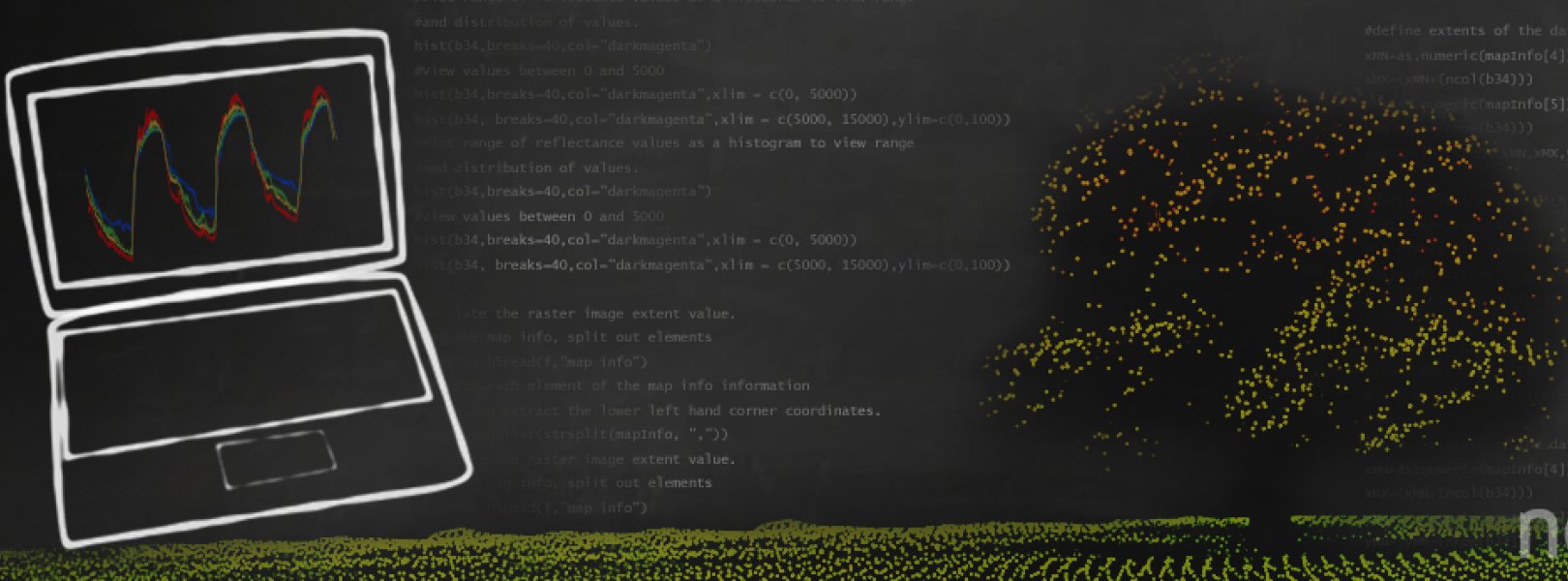Tutorials

Looking to improve your data skills using tools like R or Python? Want to learn more about working with a specific NEON data product? NEON develops online tutorials to help you improve your research. These self-paced tutorials are designed for you to used as standalone help on a single topic or as a series to learn new techniques.
Code for most script based tutorials can be downloaded at the end of the tutorial. Source files can also be found on GitHub. If you are interested in contributing a tutorial to this collection, please reach out using the Contact Us form, and we can guide you through the process of submitting resources to the GitHub repository.
All materials are freely available for you to use and reuse. We suggest the following citation for tutorials: [AUTHOR(S), NEON (National Ecological Observatory Network)]. Data Tutorial: [TUTORIAL NAME]. [URL] (accessed [DATE OF ACCESS]). See Citation Guidelines for examples, and for guidance in citing data and code.
Tutorials
Document Your Code with R Markdown
|
Download a NEON Teaching Data Subset & Set A Working Directory In R
|
Download and Explore NEON Data
|
Download and work with NEON Aquatic Instrument Data
|
Explore and work with NEON biodiversity data from aquatic ecosystems
|
Explore biodiversity with NEON algae data
|
Explore Field Spectra Data - Scaling Ground and Airborne Observations
|
Explore NEON biodiversity data using ecocomDP
|
Exploring diel carbon flux cycles
|
Exploring NEON AOP remote sensing and GBIF occurrence data in Google Earth Engine Python (geemap) to assess the impacts of a wildfire
|
Exploring sample availability at the NEON Biorepository
|
Exploring Uncertainty in Lidar Raster Data using Python
|
Exploring Uncertainty in Lidar Raster Data using R
|
Extracting Timeseries from Images using the xROI R Package
|
Filter, Piping, and GREPL Using R DPLYR - An Intro
|
Forecast Beetle Richness and Abundance and Submit Forecasts to the NEON Ecological Forecast Challenge
|
Functions in Google Earth Engine (GEE)
|
Get Started with NEON Data: A Series of Data Tutorials
|
Getting Started with the R Programming Language
|
Git 01: Intro to Git Version Control
|
Git 02: GitHub.com - Repos & Forks
|
Git 03: Git Clone - Work Locally On Your Computer
|
Git 04: Markdown Files
|
Git 05: Git Add Changes - Commit
|
Git 06: Sync GitHub Repos with Pull Requests
|
Git 07: Updating Your Repo by Setting Up a Remote
|
Going On The Grid -- An Intro to Gridding & Spatial Interpolation
|
HDFView: Exploring HDF5 Files in the Free HDFview Tool
|
Hierarchical Data Formats - What is HDF5?
|
Hyperspectral Variation Uncertainty Analysis in Python
|